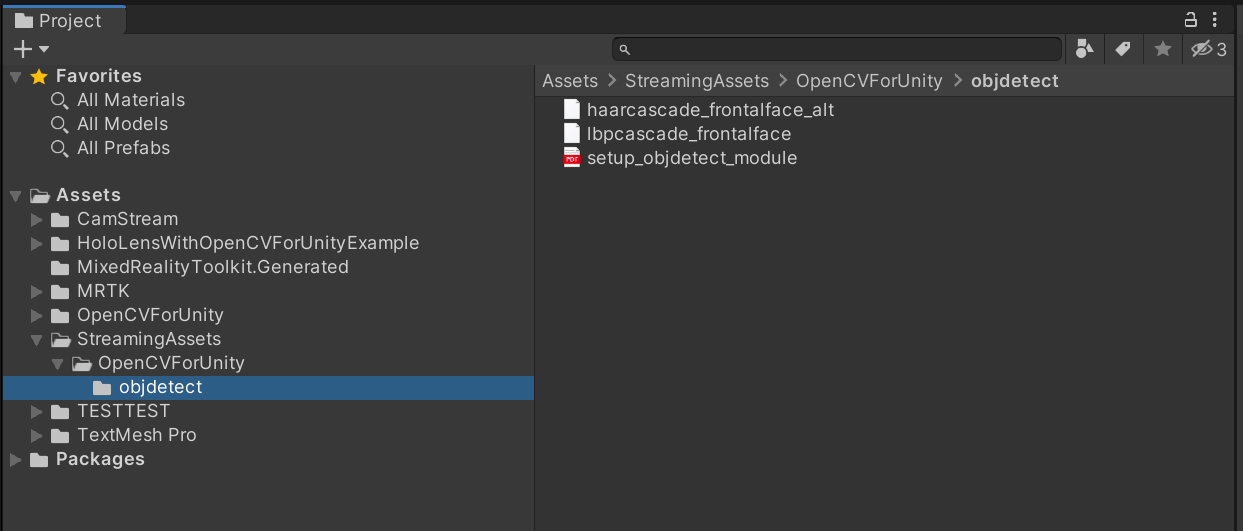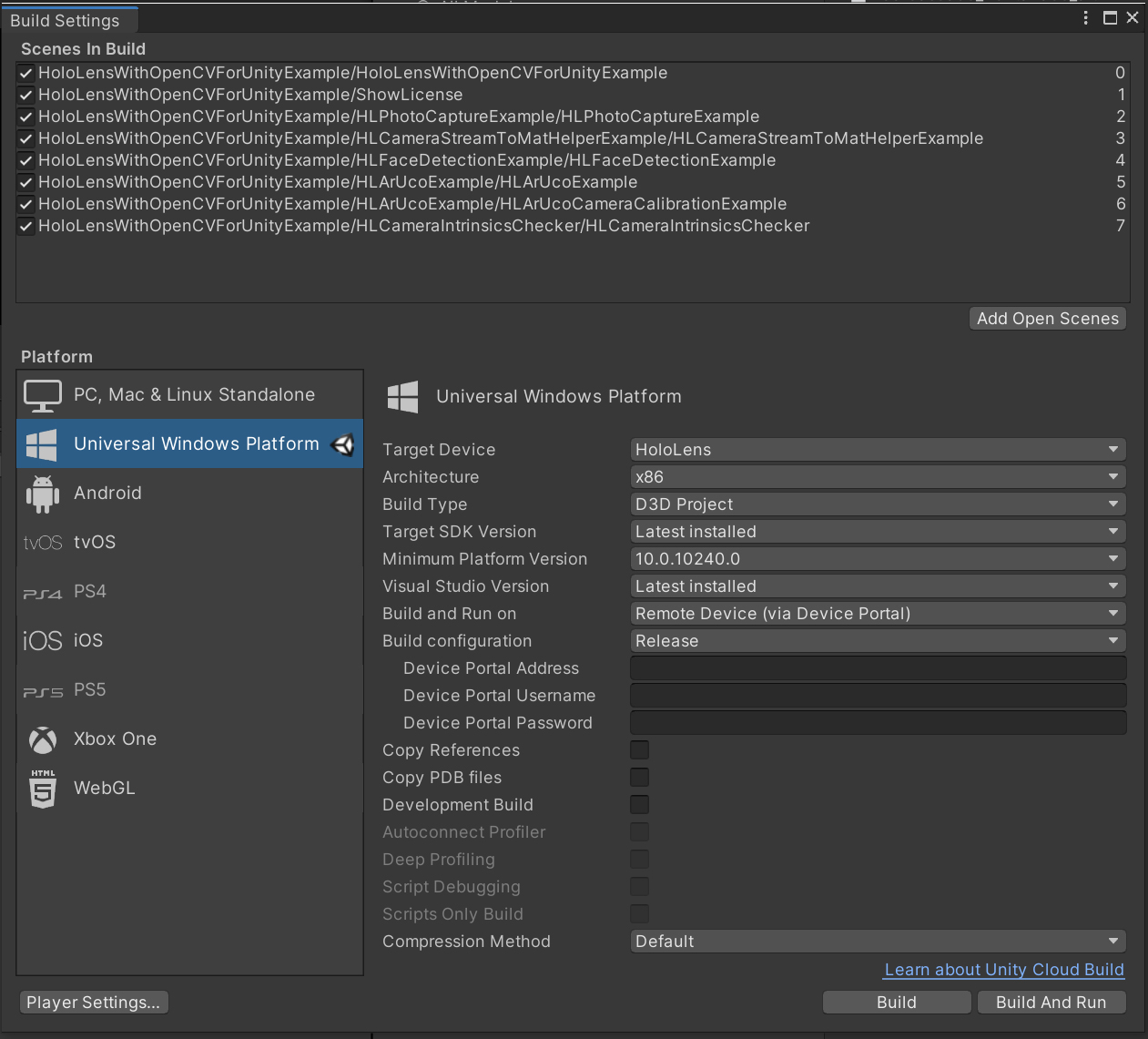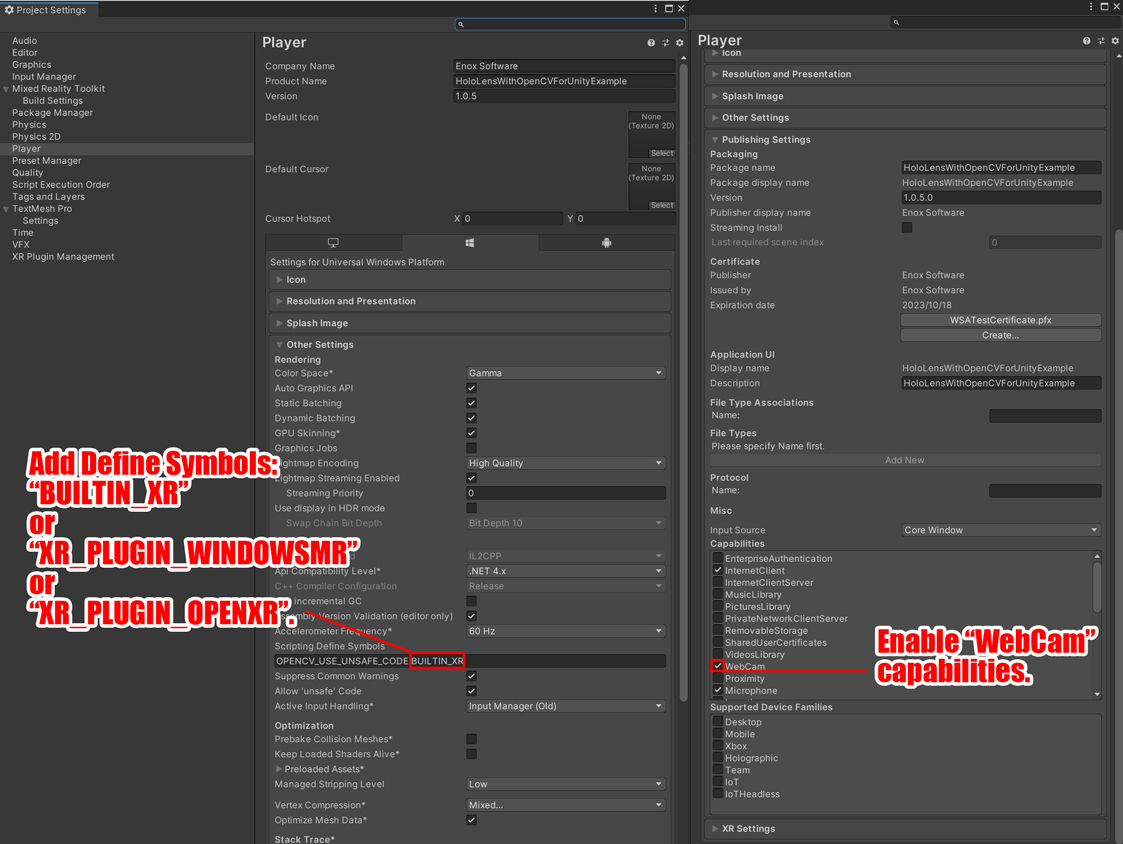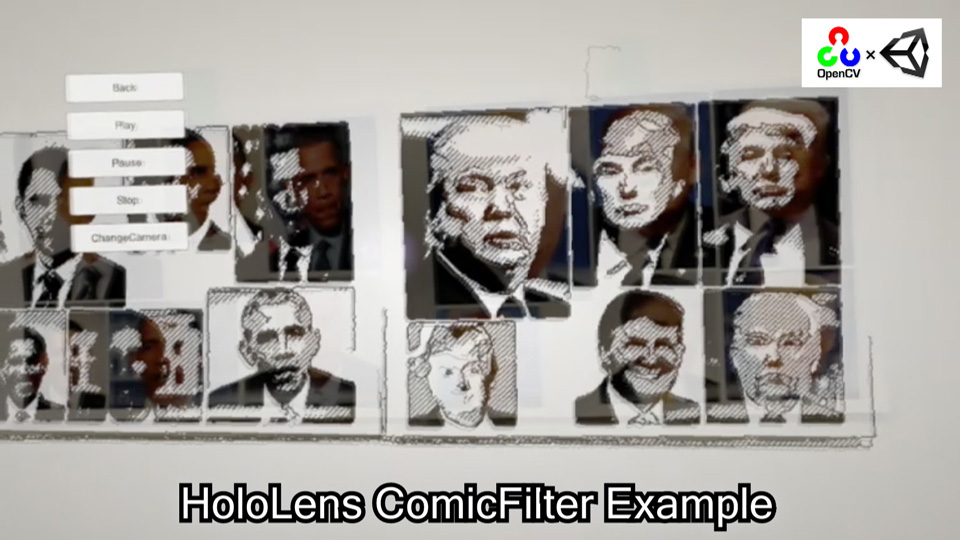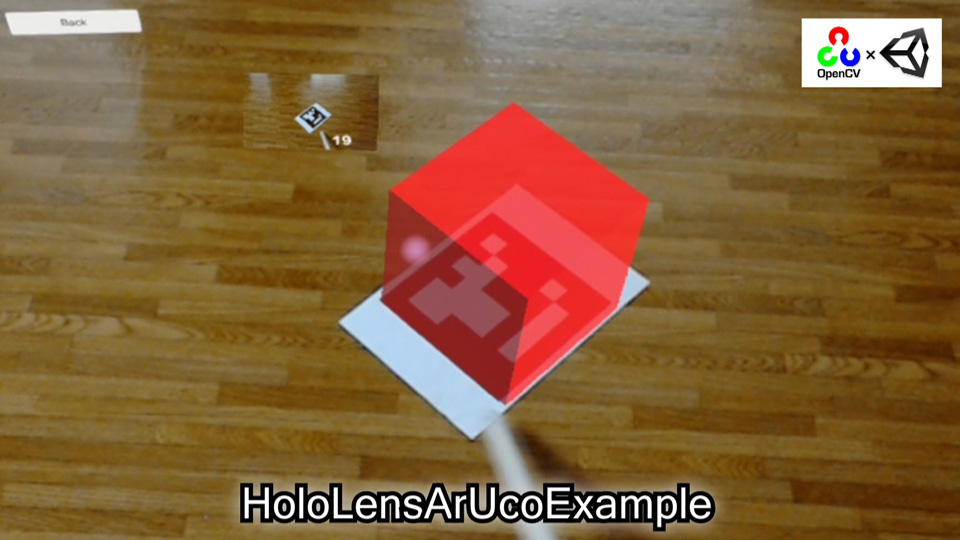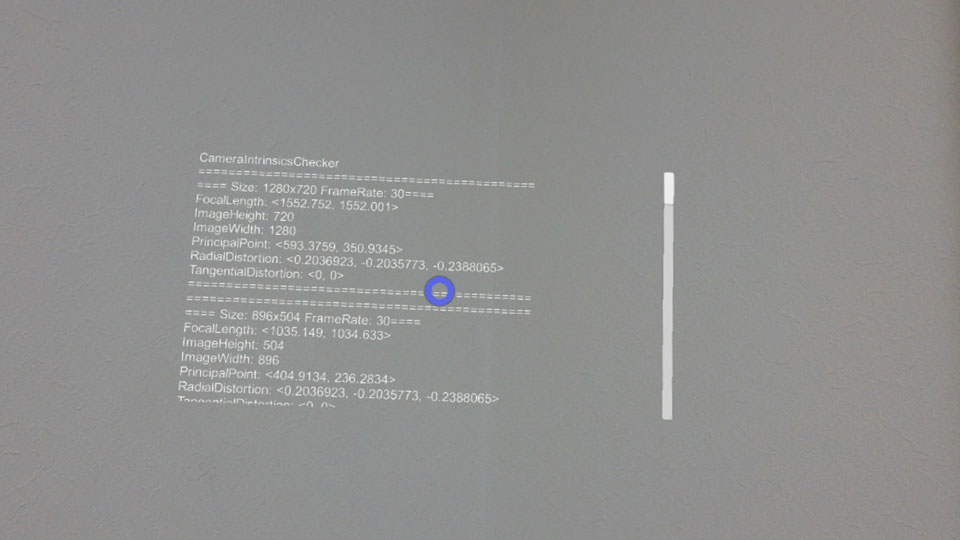热门标签
热门文章
- 1基于Next.js搭建基本可用于项目开发的过程_nextjs 权限控制
- 2【已解决】springCould整合feign提示required a bean of type xxx that could not be found_required a bean of type 引入的包
- 3Win10快捷键大全~提高工作效率必备技能,你值得拥有_win10快捷键图片
- 4关于jquery.lazyload.min.js+ajax实现分页图片预加载,如何只刷新新添加的内容
- 5使用深度学习进行时间序列预测
- 6HTML5七夕情人节表白网页(烂漫的空中散落的花瓣3D相册) HTML+CSS+JS 求婚 html生日快乐祝福代码网页 520情人节告白代码 程序员表白源码 3D旋转相册 js烟花代码_htnl5浪漫相册源码下载
- 7(附源码)springboot高校学生健康打卡系统的设计与实现 毕业设计021009_个人健康打卡系统
- 8oracle切换实例启动,SQLPLUS登录以及切换Oracle数据库实例和用户
- 9vue框架二级路由echarts不显示问题解决_vue子组件echarts图不加载
- 10工作记录 -- el-table 取消鼠标悬浮时行高亮效果_el-table划过取消高亮
当前位置: article > 正文
HoloLensWithOpenCVForUnityExample_select menuitem[tools/opencv for unity/open setup
作者:凡人多烦事01 | 2024-02-21 18:40:52
赞
踩
select menuitem[tools/opencv for unity/open setup tools]
https://github.com/EnoxSoftware/HoloLensWithOpenCVForUnityExample
What's new
- Support for Hololens1 and Hololens2. (XR System: Legacy Built-in XR / XR Plugin Management WindowsMR / XR Plugin Management OpenXR)
Demo Video (old version)
Environment
- Hololens1 10.0.17763.3532 / Hololens2 20348.1522
- Windows 10 SDK 10.0.19041.0
- Visual Studio 2019
- Unity 2019.4.31f1 / 2020.3.38f1
- Microsoft Mixed Reality Toolkit v2.8.2
- OpenCV for Unity 2.5.1+
- EnoxSoftware/HoloLensCameraStream
Setup
- Download the latest release unitypackage. HoloLensWithOpenCVForUnityExample.unitypackage
- Create a new project. (
HoloLensWithOpenCVForUnityExample)- Change the platform to
UWPin the "Build Settings" window.
- Change the platform to
- Import the OpenCVForUnity.
- Select MenuItem[Tools/OpenCV for Unity/Open Setup Tools].
- Click the [Move StreamingAssets Folder] button.
- Leave the following files and delete the rest. ("StreamingAssets/OpenCVForUnity/objdetect/haarcascade_frontalface_alt.xml", "lbpcascade_ frontalface.xml")
- Clone HoloLensCameraStream repository.
- Copy the "HoloLensCameraStream/HoloLensVideoCaptureExample/Assets/CamStream/" folder to the "Assets/" folder.
- Import the Microsoft Mixed Reality Toolkit. (Recommend using MixedRealityFeatureTool)
- Follow the MRTK2 configuration dialog to set up the project.
- Import the HoloLensWithOpenCVForUnityExample.unitypackage.
- Add the "Assets/HoloLensWithOpenCVForUnityExample/*.unity" files to the "Scenes In Build" list in the "Build Settings" window.
- Configure settings in the "Project Settings" window.
- Add Define Symbols: the following to
Scripting Define Symbolsdepending on the XR system used in your project; Legacy built-in XR:BUILTIN_XR; XR Plugin Management (Windows Mixed Reality):XR_PLUGIN_WINDOWSMR; XR Plugin Management (OpenXR):XR_PLUGIN_OPENXR. - Enable
WebCamCapabilties in Publishing settings tab.
- Add Define Symbols: the following to
- (Optional) Setup a performance environment suitable for Holorens. (See Recommended settings for Unity - Mixed Reality | Microsoft Learn)
- Build the project: You can now build the Unity project, which generates a Visual Studio Solution (which you will then have to also build). With the Build Settings window still open, click Build. In the explorer window that appears, make a new folder called
App, which should live as a sibling next to the 'Assets` folder. Then click Select Folder to generate the VS solution in that folder. Then wait for Unity to build the solution. - Open the VS Solution: When the solution is built, a Windows explorer folder will open. Open the newly-built VS solution, which lives in
App/HoloLensWithOpenCVForUnityExample.sln. This is the solution that ultimately gets deployed to your HoloLens. - Configure the deploy settings: In the Visual Studio toolbar, change the solution platform from
ARMtox86if you are building for Hololens1 or toARM64if you are building for Hololens2; Change the deploy target (the green play button) toDevice(if your HoloLens is plugged into your computer), orRemote Machine(if your HoloLens is connected via WiFi). - Run the app: Go to Debug > Start Debugging. Once the app is deployed to the HoloLens, you should see some confirmation output in the Output window.
- (Print the AR marker "CanonicalMarker-d10-i1-sp500-bb1.pdf" on an A4 size paper)
ScreenShot (old version)
声明:本文内容由网友自发贡献,不代表【wpsshop博客】立场,版权归原作者所有,本站不承担相应法律责任。如您发现有侵权的内容,请联系我们。转载请注明出处:https://www.wpsshop.cn/w/凡人多烦事01/article/detail/125745
推荐阅读
相关标签


